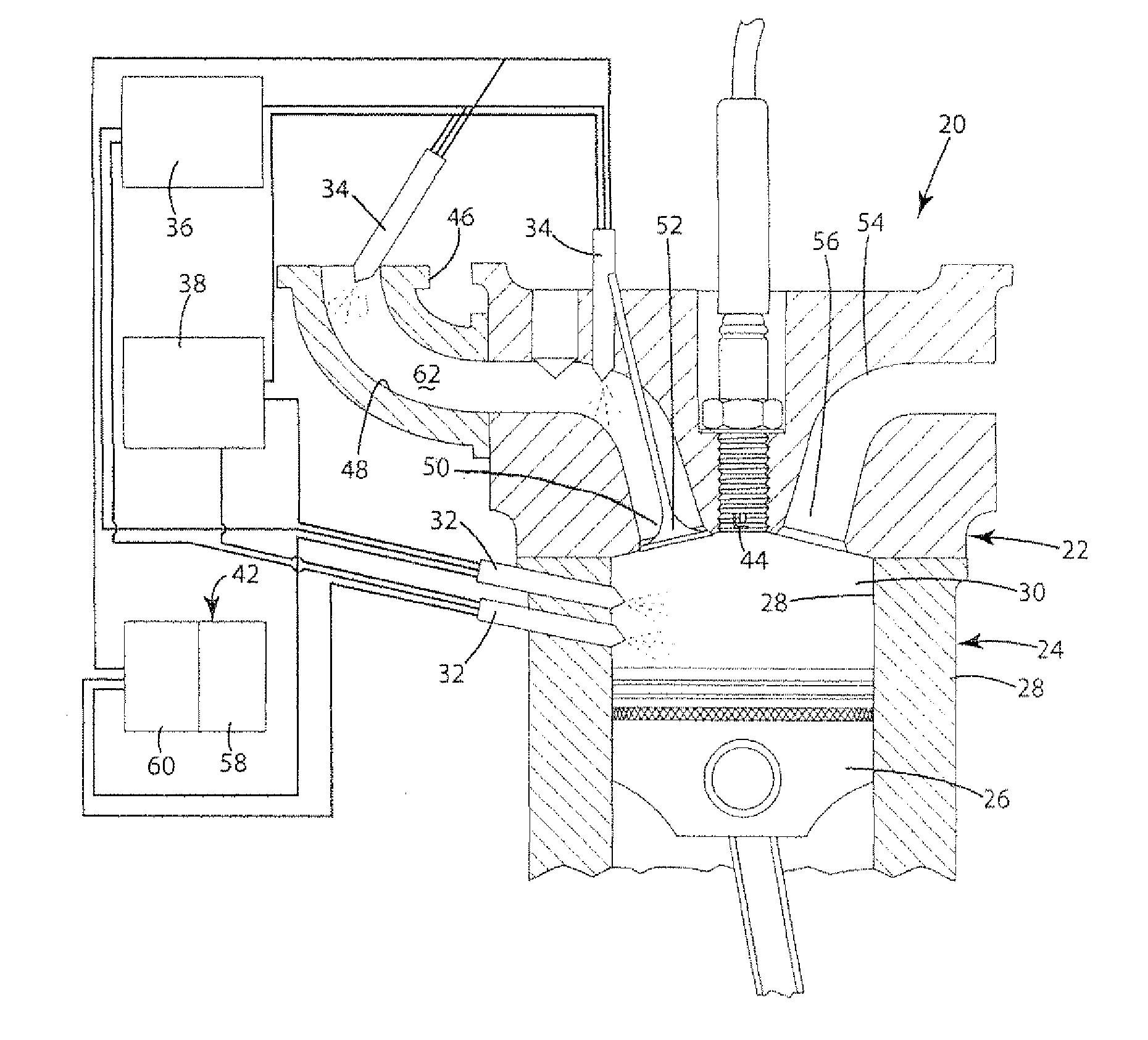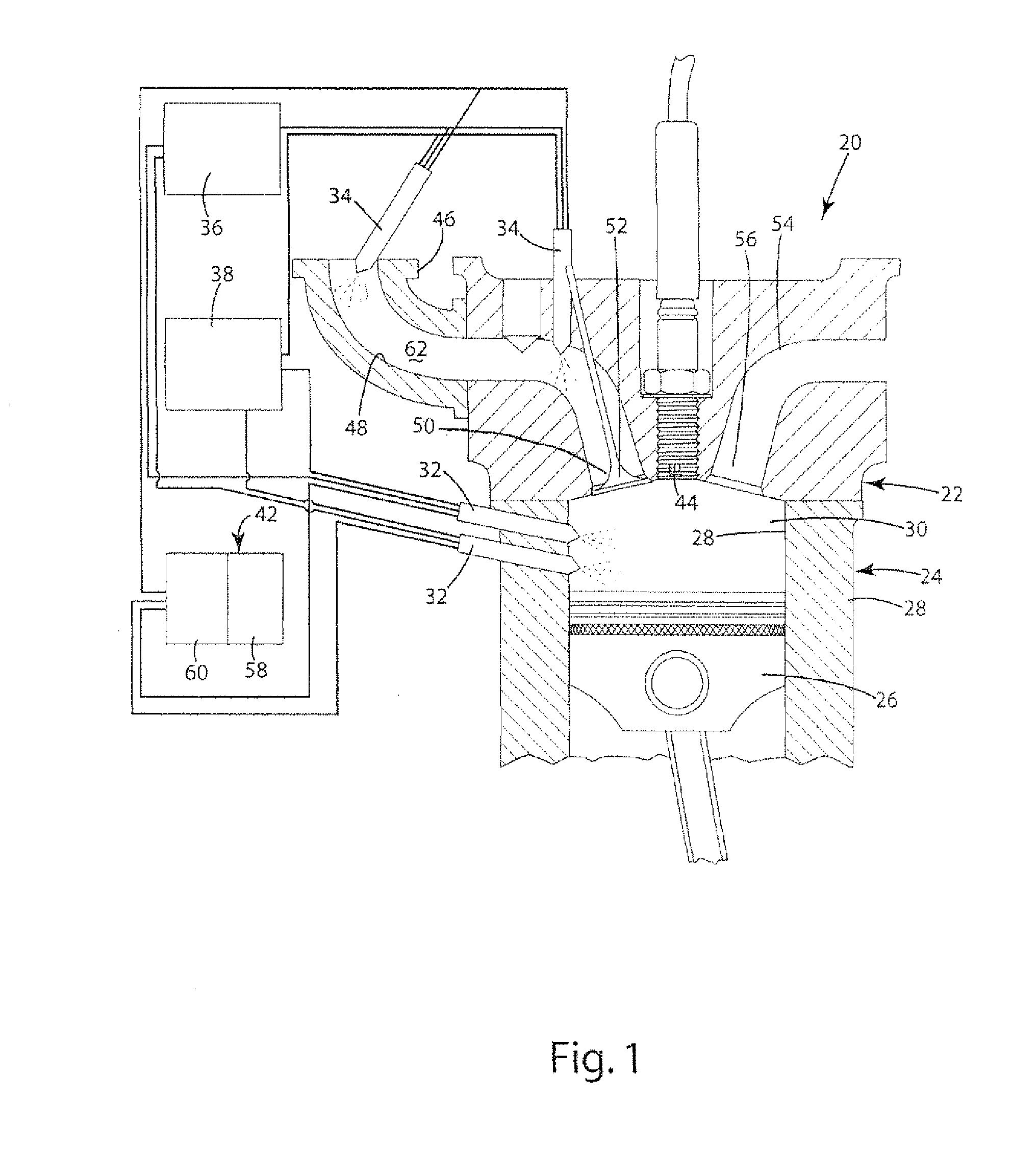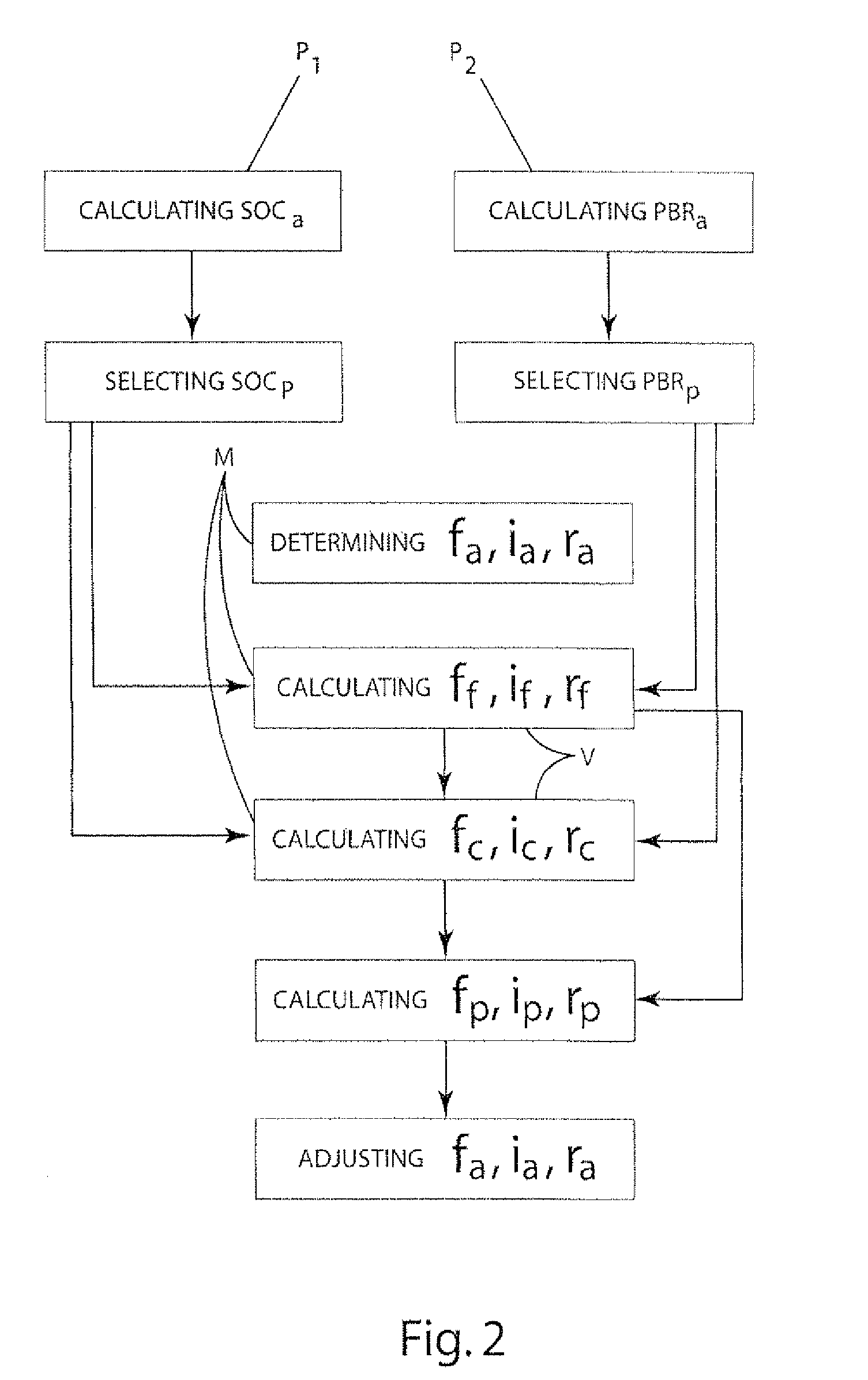Methods Of Controlling An Internal Combustion Engine Including Multiple Fuels And Multiple Injectors
a technology of injectors and fuels, applied in the direction of electrical control, process and machine control, instruments, etc., can solve the problems of increased knock, inefficient fuel economy, system is inherently difficult to control accurately and consistently on a cycle-to-cycle basis, etc., to improve fuel economy and reduce knock
- Summary
- Abstract
- Description
- Claims
- Application Information
AI Technical Summary
Benefits of technology
Problems solved by technology
Method used
Image
Examples
Embodiment Construction
[0018]Referring to the Figures, wherein like numerals indicate corresponding parts throughout the several views, an exemplar internal combustion engine 20 incorporating the present invention is generally shown in FIG. 1. The engine 20 shown in FIG. 1 and described below is given by way of illustration only and does not limit the scope of the present invention.
[0019]The present invention is well suited to work with internal combustion engines 20 that can operate by a spark ignition engine system, a homogeneous charge compression ignition (HCCI) or spark-assisted HCCI engine system. The engine 20 generally includes an engine block 22 including a cylinder 24 formed in the engine block 22 and a piston 26 which moves up and down in the cylinder 24. The piston 26 and inside wall 28 of the cylinder 24 define a combustion chamber 30, as shown in FIG. 1. The engine20 includes fuel injectors 32, 34 for delivering fuels 36, 38 to the engine 20 and an exhaust path 40 for allowing exhaust gas to...
PUM
 Login to View More
Login to View More Abstract
Description
Claims
Application Information
 Login to View More
Login to View More - R&D
- Intellectual Property
- Life Sciences
- Materials
- Tech Scout
- Unparalleled Data Quality
- Higher Quality Content
- 60% Fewer Hallucinations
Browse by: Latest US Patents, China's latest patents, Technical Efficacy Thesaurus, Application Domain, Technology Topic, Popular Technical Reports.
© 2025 PatSnap. All rights reserved.Legal|Privacy policy|Modern Slavery Act Transparency Statement|Sitemap|About US| Contact US: help@patsnap.com



